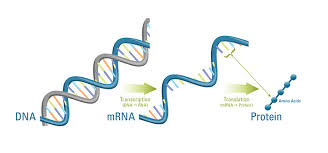Related Flashcards
Cards In This Set
| Front | Back |
|
What is genetics?
|
The study of heredity
|
|
When and where was Gregor Mendel born? What did he become? Where did he study scienec and mathematics? What did he study at the monestary?
|
1822 in what is now the Czech Republic; he became a priest; he studied at the University of Vienna; he was the gardener so he studied pea plants.
|
|
What is fertilization? What does it produce?
|
It happens during fertilization when male and female reproductive cells join.
It produces a new cell, which develops into a tiny embryo encased within a seed.
|
|
True or False: Pea flowers are normally self-pollinating, which means that sperm cells in pollen fertilize the egg cells in the same flower.
|
TRUE
|
|
What does true-breeding mean? Are pea plants true-breeding?
|
Yes, pea plants are true-breeding meaning that if they were allowed to self-pollinate, they would produce offspring identical to themselves.
|
|
How did Mendel accomplish joining male and female reproductive cells from two different plants? What is this process called?
|
He had to prevent self-pollination. He cut away the pollen-bearing male parts and then dusting pollen from another plant onto the flower. This process is called CROSS-POLLINATION. This allowed Mendel to cross-breed plants with different characteristics, and then to study the results.
|
|
What is a trait? Mendel studied 7 traits. What are hybrids?
|
A trait is a specific characteristic
Hybrids - the offspring of crosses between parents with different traits
|
|
What were Mendel's two conclusions about why only one characteristics from a parent shows up?
|
1) Biological inheritance is determined by factors (genes which determine traits, but he did not know that) that are passed from one generationto the next
2) Mendel's conclusion called the principle of dominance. This states that some alleles are dominant and others are recessive.
|
|
What are alleles?
What is segregation?
What are gametes?
|
- different forms of a gene
- separation of alleles
- sex cells
|
|
What does homozygous/heterozygous mean? Which one is true-breeding? Which one is hybrid for a particular trait?
|
Homozygous means than an organism has two identical alleles, Heterozygous means they have two different alleles for the same trait.
Homozygous are true-breeding, Heterozygous are hybrid for a particular trait.
|
|
What does the principle of independent assortment state?
|
That genes for different traits can segregate independently during the formation of gametes. Independent assortment helps account for the many genetic variations in plants, animals, and other organisms.
As a result, if enough gametes are produced, the collective group of gametes will contain all combinations of alleles possible for that organism.
|
|
Summarize Mendel's Principles.
|
1) The inheritance of biological characteristics is determined by individual units knows as genes. Genes are passed from parents to their offspring.
2) In cases in which two or more forms (alleles) of the gene for a single traight exist, some forms of the gene may be dominant and others may be recessive.
3) In most sexually reproducing organisms, each adult has two copies of each gene - one from each parent. These genes are segregated from each other when gametes are formed.
4) The alleles for differenent genes usually segregate independently of one another.
|
|
What is Gregor Mendel known as?
What are his 3 principles (Mendelian Principles)?
|
"The Father of Modern Genetics"
Principle of Dominance, Principle of segregation, Principle of independent assortment
|
|
What was the early "Blending Theory"?
|
That the offspring combination of traits from both parents could never change (red flower + white flower = pink flower)
|
|
TRUE OR FALSE: Some alleles are neither dominant nor recessive, and many traits are controlled by multiple alleles or multiple genes.
|
TRUE
|





